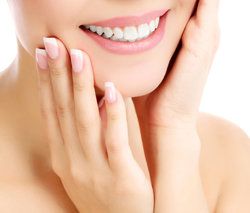Top Treatments for Tooth Decay
By John Rink DDS on January 16, 2015
 Tooth decay is one of the most common dental problems that we deal with here at he Charleston Center for Cosmetic & Restorative Dentistry. By using the latest materials and techniques in restorative dentistry, we can give patients healthy smiles that are also beautiful. Let's take a moment to consider some of the treatment options out there for tooth decay.
Tooth decay is one of the most common dental problems that we deal with here at he Charleston Center for Cosmetic & Restorative Dentistry. By using the latest materials and techniques in restorative dentistry, we can give patients healthy smiles that are also beautiful. Let's take a moment to consider some of the treatment options out there for tooth decay.
At-Home Prevention Is Always the Best Option
The best way to deal with tooth decay is to avoid whenever possible. That's why we always stress good dental hygiene as the first answer. Be sure to brush your teeth at least twice a day and to floss your teeth every night. Ideally you want to brush and floss after every meal.
Root Planing and Scaling Can Prevent Major Tooth Decay
In addition to good at-home oral hygiene and professional cleanings with your dentist, one great option for prevention is root planing and scaling. Also known as deep cleaning, root planing and scaling scrapes away plaque and tartar deposits down at the gumline, which can become major problems down the road.
Dental Fillings Are Ideal for Minor Cavities
For minor cavities and small amounts of tooth decay, the use of dental fillings is a great option to consider. Dental fillings will restore the decayed tooth structure and help you bite and chew without worrying about further damage. Composite materials mean that new dental fillings tend to be tooth-colored rather than just silver.
Inlays and Onlays Work for More Serious Tooth Decay
When a large portion of a tooth is damaged by tooth decay, an ideal option to consider is an inlay or an onlay. These are more substantial dental restorations that that can even replace the cusps (biting surfaces) of a tooth. Like fillings, tooth-colored and metal restorations are available.
Dental Crowns Can Save a Severely Damaged Tooth
When a tooth is so damaged by tooth decay that not even inlays/onlays are an ideal treatment, the best option to consider is a dental crown. Dental crowns are caps that fit over severely decayed or injured teeth, protecting the capped tooth structure from further damage. Tooth-colored crowns can be used for the front teeth, while metal crowns may prove preferable for the molars.
Tooth Extraction Is a Last Resort
Sometimes a tooth is so decayed or damaged that there is not enough healthy structure to save. In these situations, the best option for treatment is the removal of the tooth to prevent spread of infection into the gum tissue and jawbone. Options for replacing the missing tooth can be discussed in more detail during your visit.
We Strive to Work Conservatively
Obviously we want to avoid the extraction of a tooth whenever possible. The best approaches to dentistry tend to involve maintaining as much of a patient's existing tooth structure as possible, which leads to great dental health results as well as excellent smile aesthetics.
Contact the Charleston Center for Cosmetic & Restorative Dentistry
If you would like more information about treating and preventing tooth decay, it's of the utmost importance that you contact our cosmetic and restorative dentistry center today. The entire team at the Charleston Center for Cosmetic & Restorative Dentistry looks forward to your visit and helping you have the healthiest smile possible.

